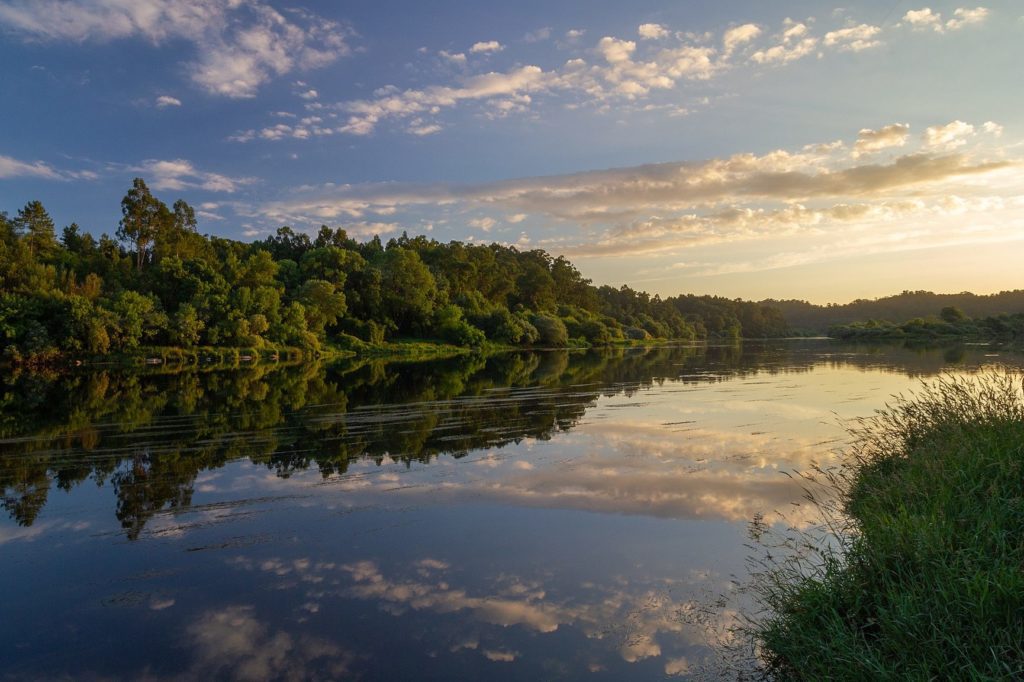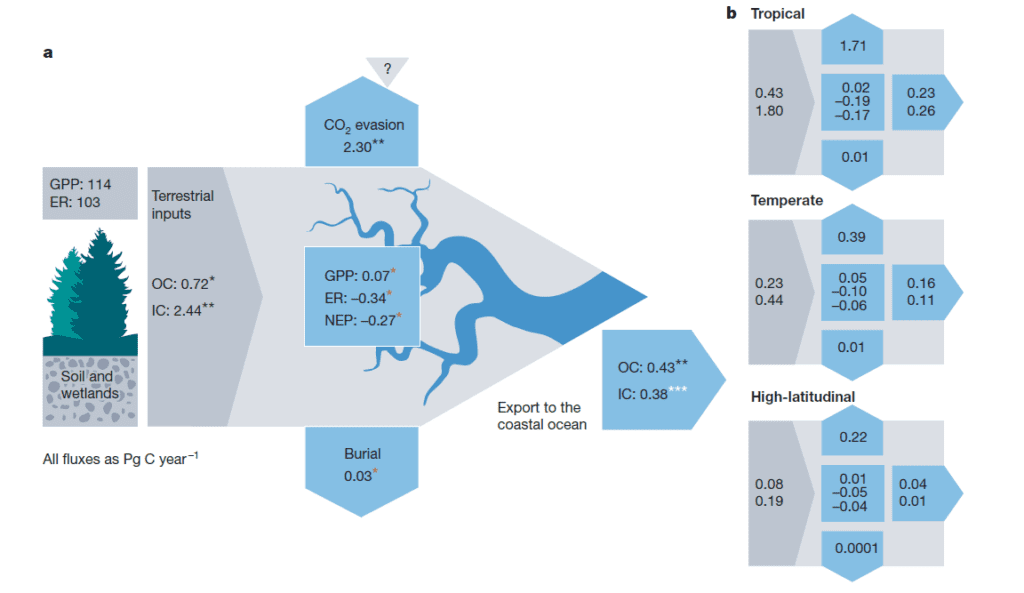Climate change impacts how rivers breathe

Rivers “breathe” and play a fundamental role in the global carbon cycle. A study recently published in Nature led by an international team in which CREAF postdoctoral researcher Lluis Gómez Gener has participated, shows that river ecosystems play a valuable role in the exchange of greenhouse gases and, consequently, in the study of global climate change. He also warns that rivers (and the processes that occur there) are highly vulnerable to environmental change. Therefore, to better understand and predict the role of rivers in global-scale carbon transport from continents to oceans to atmosphere, the authors call for the implementation of a global River Observing System (which they call RIOS). The study found rivers around the world absorb some 3.2 billion tonnes of carbon per year, equivalent to about a quarter of the carbon produced by all terrestrial plants. Of all this carbon received, about 37% is returned to the atmosphere in the form of carbon dioxide, and only 26% of the carbon reaches the sea.
The study claims that rivers have been underestimated in the study of climate change and recalls that, until recently, knowledge of the global carbon cycle was limited to the oceans and terrestrial ecosystems (forests, crops, etc.). The research team, formed by a consortium of international institutions, analysed how global changes (in particular climate change, urbanisation, land use and water use, including dams) may affect the metabolism of river ecosystems, leading to a global increase in greenhouse gas emissions.

“To some extent, that rivers act as emitters of CO2 and other greenhouse gases into the atmosphere is part of the natural dynamics of these ecosystems. However, it is likely that emissions from rivers are increasing as river systems and their watersheds are altered, but we do not have this information. In this sense, RIOS would be a diagnostic tool to ‘take the pulse’ of river ecosystems. If we compare it to the monitoring we do of our circulatory system, which we monitor for health reasons, we need to start monitoring the health of the world’s river system.”
LLUÍS GÓMEZ-GENER, CREAF researcher.
Healthy watersheds lead to clean water and clear skies
The article demonstrates that rivers are a mirror through which we can see everything that happens within a river basin, the branches of rivers connect terrestrial and aquatic ecosystems and thus integrate natural and human disturbances that promote future carbon dioxide and methane emissions. For example, in the Congo, deforestation for palm plantations is facilitating erosion and washing of highly degradable organic matter into the river, causing CO2 emissions to increase. In fact, many of the impacts illustrated are through eutrophication, a process that favours the disproportionate growth of algae (and other primary producers) in the river, through the uncontrolled input of organic matter and nutrients, and leads to the loss of oxygen and the production of methane and nitrous oxide in large quantities (greenhouse gases that have a greater global warming potential than CO2).

“Specifically, when dissolved oxygen in rivers decreases due to pollution, anaerobic bacteria mineralise organic matter to produce CO2 and methane, while denitrifying bacteria convert nitrate (NO3) into nitrous oxide (N2O),” explains Gómez-Gener.
The article also points out that many rivers are changing their permanent regimes and becoming intermittent rivers, which partially dry up at certain times of the year. In this sense, when the flow is reduced, there are pools of water that lose oxygen and the production of CO2 and CH4 goes out of control.
RIOS, a new global river observation system
The authors conclude that a River Observing System, which they call RIOS, should be implemented to better quantify and predict the role of rivers in the global carbon cycle. RIOS would integrate data from the river sensor network and satellite imagery with mathematical models to generate near real-time carbon fluxes related to the metabolism of river ecosystems.
The biggest challenges RIOS faces are first, to cover all possible types of river ecosystems in as many regions as possible (the tropics, high and low latitudes, the Global South), and second, to scale up the capacity to calculate the carbon fluxes an individual river reaches on a global scale, for all river networks in the world. If those challenges are solved, RIOS could be used to improve simulations or predictions of the effects of global change on river systems, and vice versa.

The article was first published in Blog CREAF 17 March 2023, authored by Anna Ramon of the Centre for Ecological Research and Forestry Applications (CREAF) and translated from Catalan into English by Marta Castillo, Communications Officer at AMWAJ.
References
Battin, T. J., Lauerwald, R., Bernhardt, E. S., Bertuzzo, E., Gener, L. G., Hall Jr, R. O., … & Regnier, P. (2023). River ecosystem metabolism and carbon biogeochemistry in a changing world. Nature, 613(7944), 449-459.
